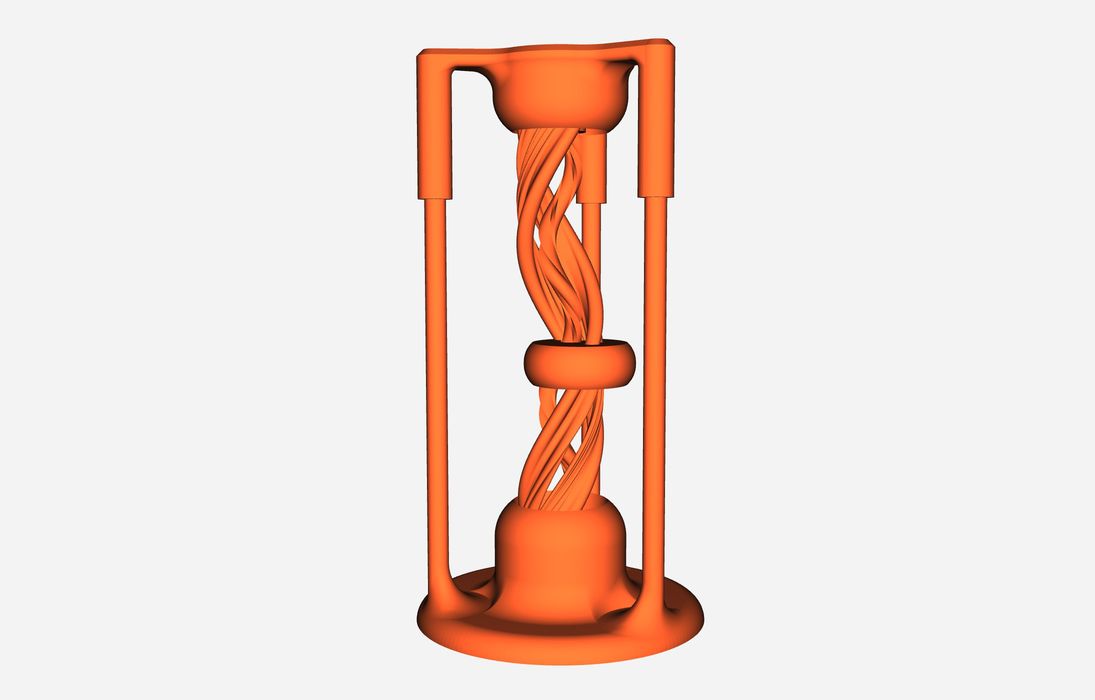
This week’s selection is the Dual Portal Desk Toy by Printables contributor Ada Cohen.
This would, at first glance, appear to be a rather simple structure: a top, bottom and some twisty stuff in-between. But that’s not it. Not it at all.
The magic appears when you move the bit in the middle. Observe and be amazed:
It’s magic!
The optical illusion here seems to have the twisty parts sliding un explainably into the floor, or disappearing at the top. It’s an ingenious design of a threaded mechanism.
The illusion is actually the well-known “Barberpole illusion”, used on barberpoles throughout recent history. However, the Barberpole illusion is a 2D effect, while this device operates in 3D.
Cohen explains the design:
“The fundamental illusion is just the barberpole illusion with some window dressing. Using a strangely shaped revolution with gaps in it makes it harder to read it as a screw.
This version includes a second twist: there are two independently rotating screws with opposite threads and different pitch. As the slider moves, it ensures that the screws each rotate at the correct speed and in the right direction to produce the illusion.”
3D printing this project is straightforward, although there is one constraint: you cannot resize the model. That’s because the project requires the use of four standard-size skateboard bearings for smooth rotation. A rescale would ensure those bearings don’t fit.
I presume, however, that if you somehow found bearings of a smaller (or larger) size, and scaled the model to the same bearing size ratio change, it might work.
There are also a couple of screws required to hold the parts together.
There have been several 3D models of this type published in the past, and this one is actually inspired by them, but adds a number of new features. Cohen listed them:
- Stronger illusion
- Somewhat quieter
- You can rotate the center assembly and see that it is not a simple screw
- The slider cannot fall freely to the bottom when you let go.
- Stricter print requirements; you need at least a 246mm build height
- More difficult to print
- More difficult to assemble
- May require some glue
Assembly does sound a bit tricky, but likely achievable by most Fabbaloo readers.
This project is an excellent example of motion-based design using 3D printing, and why we selected it for our Design of the Week.
Via Printables
